So you want to start an Amazon FBA business but don’t have a lot of money saved up? That’s okay!
There are many ways to get started without spending a lot of cash. Starting your own business can be daunting, but it doesn’t have to be expensive.
In this article, I will discuss how to start an Amazon FBA business with little money, as well as some tips and strategies for starting your own Amazon FBA business on a budget.
I’ll also provide a few helpful resources to help you get started today.
At the end of this article, I’ll demonstrate a little-known strategy for maximizing your investment and achieving high profits quickly if you have between $1,000 and $2,000 to invest.
Let’s get started!
Does Selling On Amazon Cost Money?
The short answer is yes, but in some instances, you don’t even need to spend money to sell on Amazon.
In fact, you can start selling on Amazon without spending a single dime.
All you need is a product to sell and an Amazon account.
Of course, there are some individual account costs associated with running an Amazon business, but you can keep them to a minimum if you’re strategic about it.
For example, you’ll need to pay for the shipping cost when sending your products to Amazon if you choose to use a fulfillment service like Fulfillment by Amazon (FBA) where Amazon handles the shipping for you.
What Is The Amazon Fee?
Amazon charges a small fee for each item you sell — $0.99 to be exact. This is called the Individual Per Product Fee.
There are also referral fees, which are based on the total sale price.
The referral fee is about 15% of the total sale price, but it can vary depending on the product category.
These charges are deducted only when you make a sale, so you don’t have to worry about them upfront.
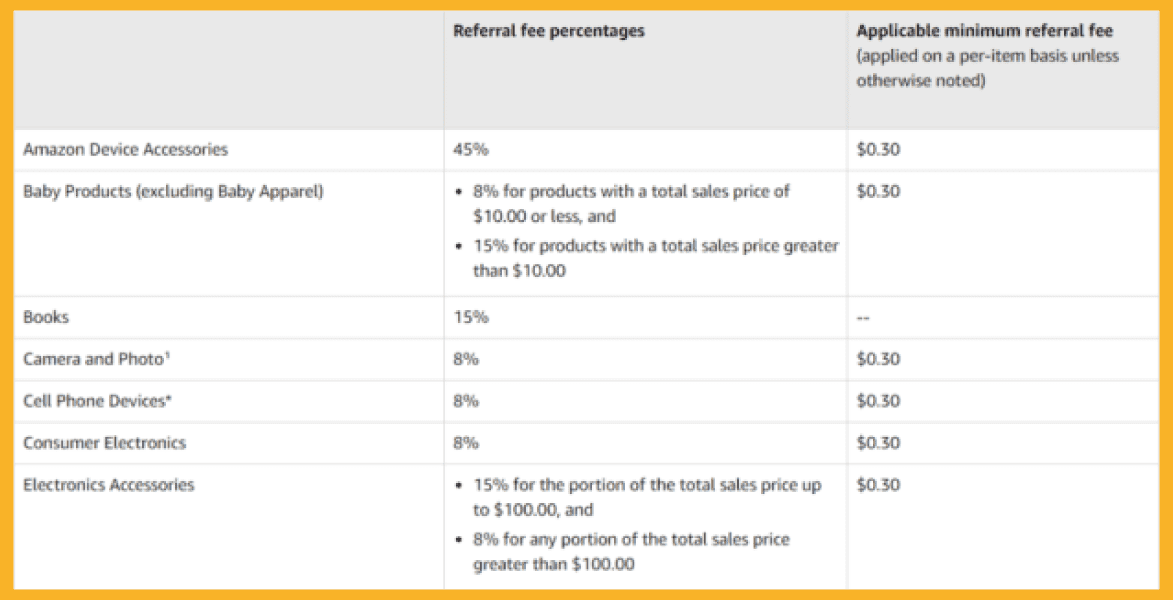
How Much Does It Cost To Sell On Amazon As An Individual?
The selling costs on Amazon for individuals can vary depending on a few factors.
These include:
- Monthly subscription fees: Amazon sellers under the professional account plan pay a flat monthly fee of $39.99 per month, while individual sellers do not pay a subscription fee. They only pay $0.99 for each item sold.
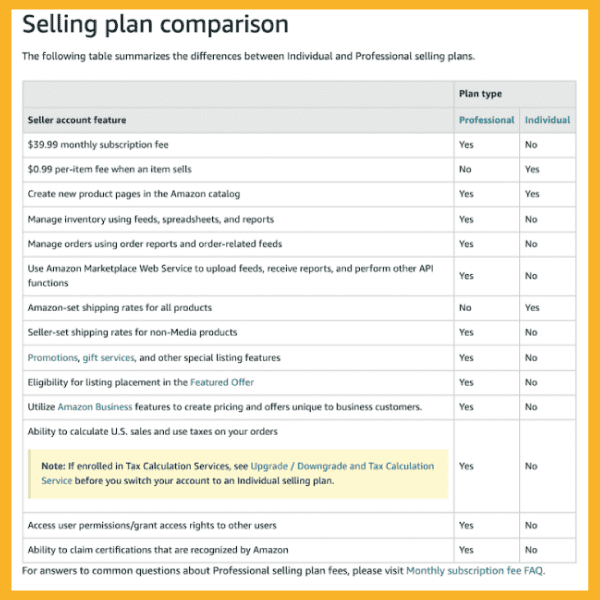
- FBA fees: Additional fees will apply if you use Amazon’s fulfillment services. These include storage fees and shipping fees to Amazon.
- FBM fees: If you choose to fulfill orders yourself, you’ll still need to pay a fee when shipping items to your customers (fulfillment costs).
- Customer returns fees: If a customer returns an item, you’ll be charged a return fee.
Other than these Amazon-related fees, you’ll also have to cover these Amazon FBA startup costs:
- The cost of your product/inventory costs: This will depend on where you’re sourcing your products, but it keeps the price you pay for your product in mind as the initial investment will determine your profit margin.
- Product photoshoots: Professional photos can make a big difference in how your product is perceived by customers. The cost of a professional photographer can vary depending on the size and complexity of your product.
- Product packaging: In addition to manufacturing costs, you’ll need to factor in the cost of packaging your product before sending the expected initial inventory to Amazon. This includes the cost of boxes and other packing materials.
How To Start Amazon FBA Step By Step
The Fulfillment by Amazon (FBA) service makes it easy to start your own business with little money.
You can find well-performing products on Amazon and then ship them to Amazon’s fulfillment center. Amazon will then handle the shipping and customer service for you.
All you need to do is ship the products to Amazon. They will take care of the rest.
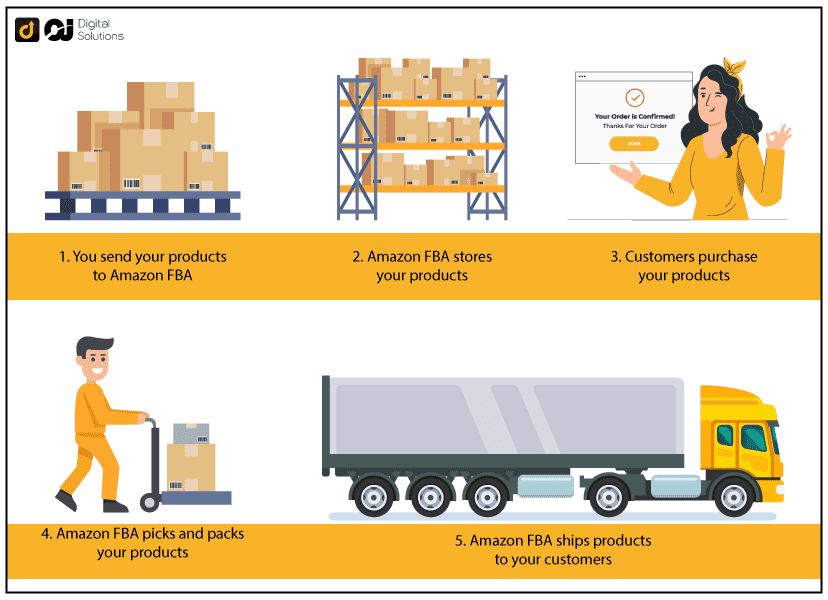
Here is how to get started with FBA on a tight budget:
Register your selling account:
Before you can start selling, you’ll need to create an Amazon seller account.
You can do this by going to Amazon’s Seller Central page and clicking on Create a New Seller Account.
Amazon has two selling plans: the Individual and the Professional selling plan.
The Individual plan is best for those who are just starting out and don’t have much experience selling online.
It is for those who sell less than 40 items per month.
On the other hand, the Amazon Professional sellers account is suited for more experienced sellers and want to take advantage of Amazon’s additional features.
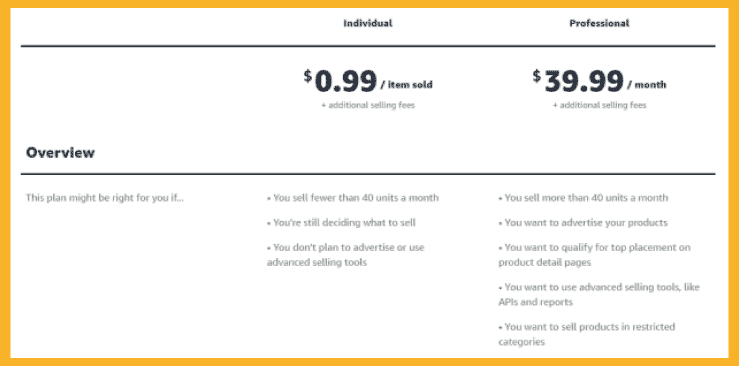
Make sure you have access to these items in order to complete your registration as an Amazon seller:
- Account and routing numbers for a bank
- Credit card
- Tax information
- Tax information
- Call-in phone number
Choose and list your product:
Once you’ve created your account, it’s time to choose the products you want to sell on Amazon.
Click the Add a Product option found under the Inventory drop-down menu in your Amazon sellers account to add a new listing.
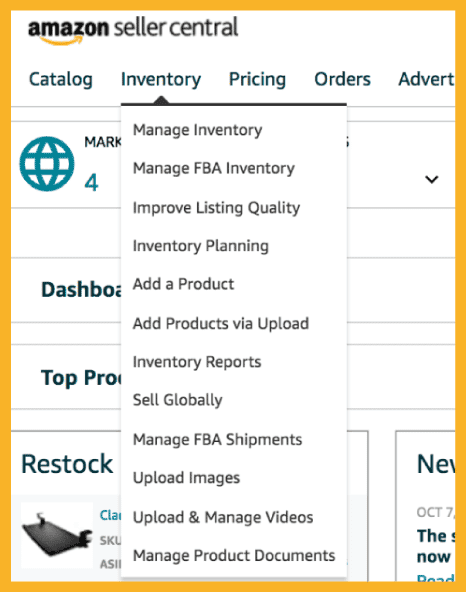
Follow the link Create a new listing.
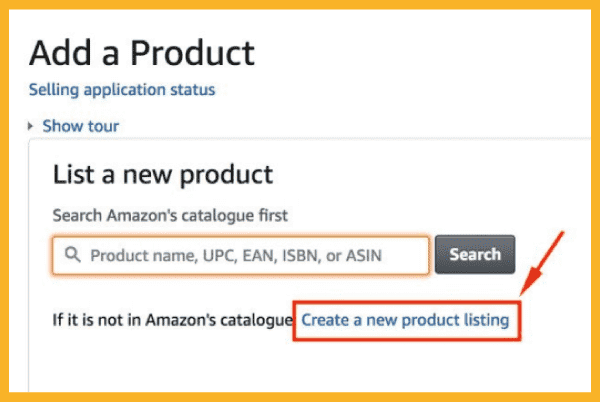
Enter the product information, such as the brand name, description, price, unit count, and product category.
You’ll also need to upload at least one product image.
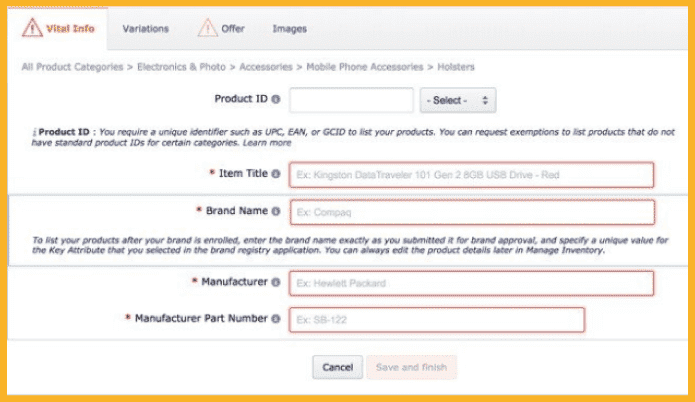
Make sure you choose a product that is already selling well on Amazon.
You can do this by going to Amazon’s Best Sellers page and searching for products in your category.
You can also use other e-commerce platforms like eBay and Alibaba as reference points.
Set up FBA:
After deciding on a product, it’s time to set up Fulfillment by Amazon (FBA).
To do this, go to the Manage Inventory page in your Amazon seller account.
Select the items you want to include under FBA. From the Action on Selected drop-down menu, click on Change To Fulfilled by Amazon.
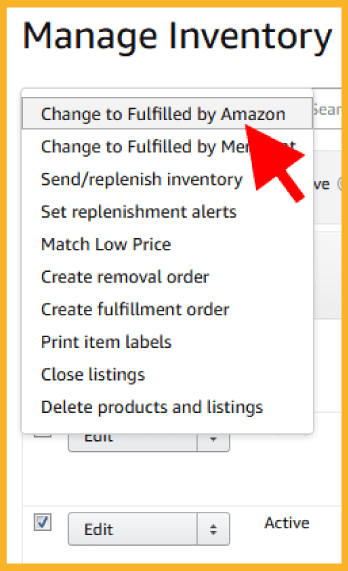
Ship your product to Amazon:
Amazon will provide you with a shipping label that you’ll need to attach to your package. You can then drop off the package at your local post office or UPS store.
It’s important to note that you’ll be shouldering unit shipping costs. You can ship through several different services such as UPS, FedEx, or DHL.
You’ll also be paying for the cost of any labeling or packaging materials.
Amazon provides some free labeling and packaging materials, but you’ll have to pay for their shipping cost as well.
Always remember to follow Amazon’s shipping and routing requirements.
Experienced sellers using the private labeling business model would often buy products from suppliers overseas and ship those products to the US.
Most commonly, the suppliers would be in China, and then the Chinese supplier would ship from China to USA, directly to Amazon’s warehouse where the products will be stored and sent to customers that purchase from your product listing.
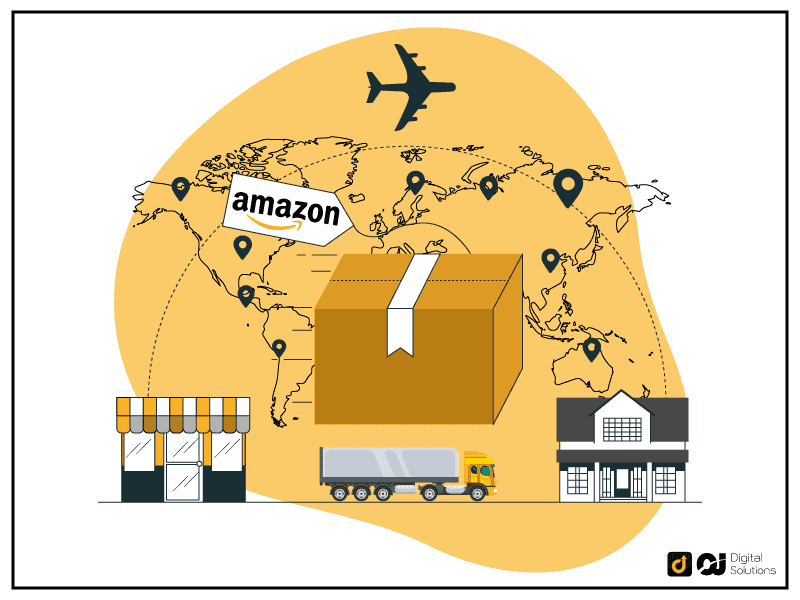
Monitor your sales:
Once your product is listed on Amazon, you’ll need to monitor your sales.
Go to the Reports Tab and select Business Reports to access this.
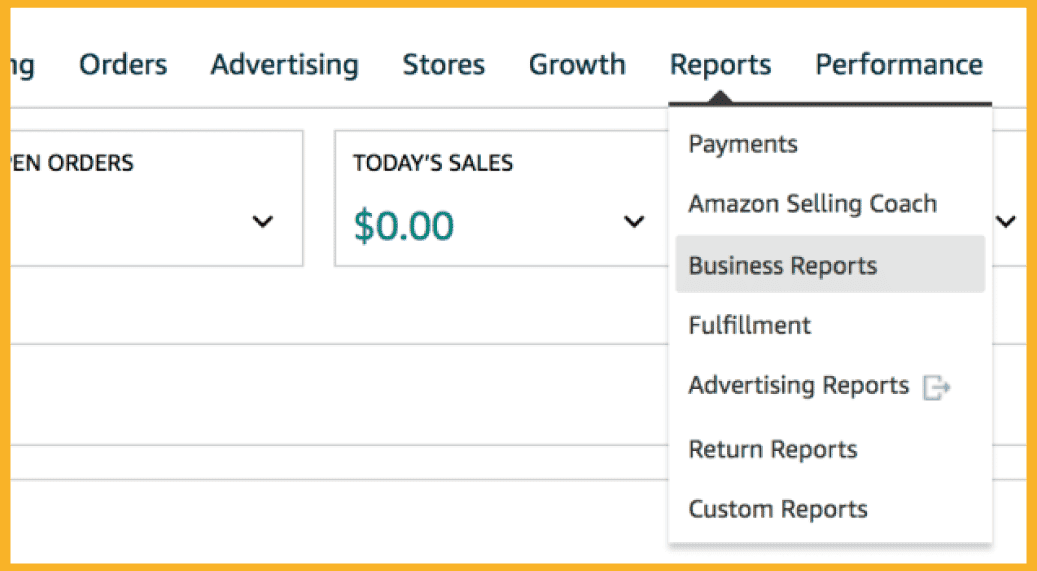
Your Sales Dashboard will first be displayed.
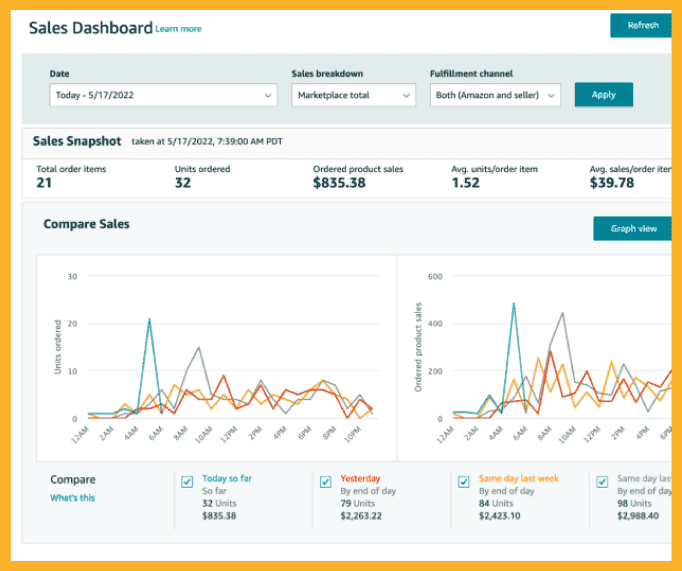
This menu will provide you with an overview of your overall Amazon sales.
You can view today’s sales, sales for the past week, month, or year. You can specify date ranges, too.
It’s important to closely monitor your sales so that you can make adjustments to your listings if needed.
For example, if you see that your product is not selling well, you may need to change the price or the description. You can also use Amazon’s FBA reports to track your sales.
How To Fulfill The Shipment
When you use Amazon FBA, your products are stored at Amazon’s fulfillment centers.
When an order is placed, Amazon will pick, pack, and ship your products. They will also handle customer service and returns for you.
To fulfill a shipment, you must first create a shipping plan in your seller account.
A shipping strategy will specify the goods you’re sending to Amazon, the quantities of each product, your shipping plan and carrier, as well as who’s in charge of packaging and labeling the goods.
Before creating a shipping order, you must create a listing for any Private Label products you are shipping.
This can be done by creating a product listing.
Follow these steps to fulfill the shipment to Amazon:
Step 1: Create your shipping plan. Select each item you want to send to Amazon on the Manage Inventory page. From the drop-down menu for Actions on Selected, choose Send/Replenish Inventory. From this point, you can either start from scratch or expand an existing shipping plan.
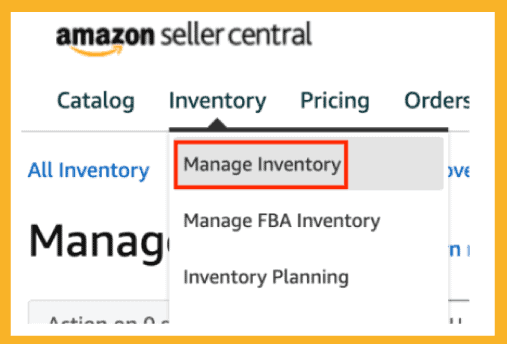
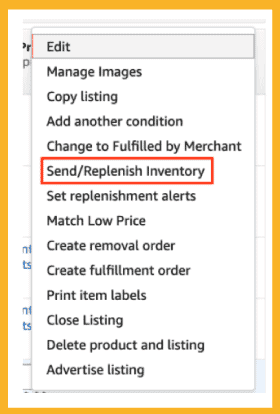
Step 2: Set your ship-from address. It could be your residence, place of business, or supplier since this is where you’ll be shipping the goods from.
Step 3: Verify the packing type. Case-packed products are similar items in the same condition that are packed together (think wholesale), whereas individual products are single items of varying conditions and qualities.
Although the majority of Private Label sellers create Case-Packed shipping plans, retail arbitrage sellers usually create Individual Product shipping plans.
An arbitrage seller might ship a large number of different items to Amazon in a single box (individual products), whereas a Private Label seller might ship a large number of the same item into Amazon (case-packed).
Step 4: Select Continue to Shipping Plan
Step 5: Prepare your products for shipping. This includes ensuring that your products are properly labeled, barcoded, and packaged.
Step 6: Print your shipping labels. Amazon provides two options for this: printing your own labels or using Fulfillment by Amazon’s labeling service.
Make sure your items are properly labeled before sending them to Amazon.

Step 7: Hand your products over to the carrier.
Once you’ve printed your shipping labels, attach them to your products and send them to Amazon after choosing a shipping service.
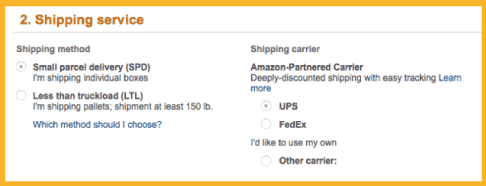
Selling On Amazon Without Inventory
Private Label:
Private Label is a business model in which you create your own brand of products.
How it works is simple: you source products from a manufacturer, and then sell them under your brand name.
Private Label is a good option if you want to build a long-term, sustainable business on Amazon.
The biggest advantage is that you will have full control over your brand. You can build a brand that customers trust and are loyal to.
Private Label also allows you to create unique products that offer a better value proposition than similar products that are already on the market.
Another advantage of Private Label is that you will be able to scale your business more easily.
Once you have a successful Private Label product, you can launch new products under your brand with relative ease.
This will allow you to grow your business quickly and efficiently. You can also start with a very small investment by only acquiring a few units to begin with.
The downside of Private Label is that it takes more time and effort to get started.
You will have to find a manufacturer, source products, create your own branding, and build a marketing strategy.
That’s a lot of work, but it will pay off if your goal is to build a successful Amazon business.
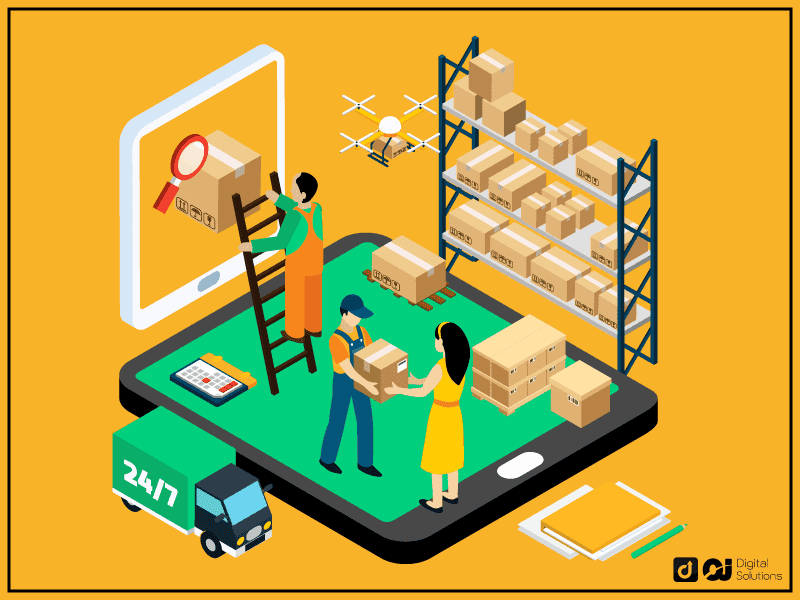
Dropshipping:
Dropshipping is a model in which you sell products that you don’t have in stock.
With dropshipping, a customer orders from you, but the product will be shipped from the supplier directly to the customer.
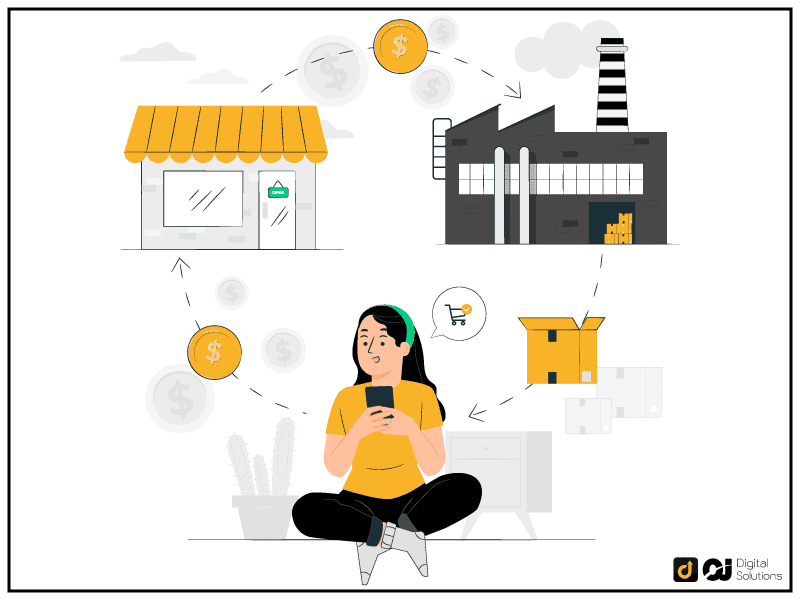
Dropshipping is a good option if your capital isn’t big because you don’t have to invest in inventory when selling products.
To dropship on Amazon, you have to find a supplier that is willing to dropship for you.
You can find dropshipping suppliers by searching online or attending trade shows.
Once you’ve found a supplier, create a listing for your product on Amazon.
When a customer orders your product, you will contact the supplier and have them ship the product.
Alternatively, you can use Amazon’s Merchant fulfilled program.
In the Merchant fulfilled program, you can ship your products yourself. You will be responsible for packing and shipping it to customers.
On top of that, you will be in charge of customer service and returns. This means you don’t have to take your products to Amazon fulfillment centers.
This is a good choice if you want more control over your business, but it requires more work on your part.
The Micro Private Label Model Amazon – Start With $1000
Micro private labeling, or private labeling on a smaller scale, enables new sellers to launch with a lower budget.
It is a variation of the traditional private label model which is better suited for those with limited budgets and/or experience.
With this model, you won’t be selling on Amazon US due to the market’s intense competition. Instead, you will focus on less cutthroat locales like Europe or Australia.
What you want to look for are products with low to medium competition in addition to high demand and a low price point, enabling you to rank quickly and profitably.
Instead of placing a sizable order from the supplier that will be shipped by sea, only 50 items will be ordered. These will be shipped by air.
Since the first order will be shipped by air, you can start selling in no more than 30 days.
It is a good starting point for Amazon beginners to learn more about product sourcing, shipping, Amazon’s platform, etc.
If you make a profit, you can then reinvest those profits back into the business to grow it further.
If you don’t make any profit or just break even, you can still learn a lot from the experience and use that knowledge in future efforts.
This model is best suited for those with:
- A limited budget
- The ability to source products cheaply
- Little experience in private labeling and/or Amazon seller central offering
- Patience and the willingness to learn from mistakes
What Are The Benefits Of The Micro Private Label Model?
There are several reasons why you should consider the micro private label model:
- You can launch quickly and cheaply: One of the main benefits of the micro private label model is that it enables you to launch your product quickly and cheaply. This is because you don’t need to spend a lot of money on research and development, or on marketing and advertising.
- You can focus on less competitive markets: Another benefit of the micro private label model is that it enables you to focus on less competitive markets. You can save money you otherwise would have spent trying to go head-to-head with big brands.
- Low risk: Because you’re starting with a relatively low budget, this also means that the risk involved is much lower. That’s one less thing to worry about so you can channel your energy into pulling in more sales.
- You can scale your business: The more profits you make, the more funds you can reinvest into the business. And even if you don’t achieve success right away, they will always be learning opportunities, which are invaluable.
- It gives you the experience of running an Amazon business: Nothing beats experience. Being in the driver’s seat will teach you more about being an effective seller than theoretical knowledge ever will.
How Does It Work?
The first step is to choose a product with high demand and low competition. You can do this by performing research on Amazon itself.
Once you’ve identified a product, the next step is to source your product. Buy 50 units of the product from China and ship them to your warehouse by air shipping.
After that, launch your product through PPC. PPC stands for pay-per-click, a way of advertising your product on Amazon.
You should start with a budget for your PPC campaign, and you should aim to get two sales within the first week. Once you accomplish that, you can then get two reviews from each customer. Reviews and ratings are important because they help improve your conversion rate.
If you continue to run your PPC campaign, you should sell all 50 units within a month.
When you have sold all 50 units of your product, reinvest your profits back into the business to grow it further.
You can do this by adding more products to your inventory and increasing your PPC budget to get more sales.
The micro private label model is a great way to get started with the FBA business model on a small budget.
Preferred markets for this include Australia, Japan, France, Canada, Italy, and Germany.
How To Get Sales On Amazon
There are a few different ways to generate sales on Amazon. These include:
- Have an exceptional product: If your product is well-made and offers a good value proposition, customers will be more likely to buy it irrespective of the selling price.
- Create optimized listings: Your product listing as an Amazon FBA seller should be well-written and include high-quality images. It should also be keyword-optimized so that customers can easily find it on their search results. This will boost your organic sales. Check out this in-depth Amazon listing optimization guide to learn more.
- Use Amazon Sponsored Products: Amazon Sponsored Products is a pay-per-click advertising program that allows you to place ads for your products on Amazon. This will increase your visibility.
- Provide excellent customer service: Good customer service will help build trust and loyalty with your customers. The stronger the relationship you build with customers, the more likely they’ll purchase from you again and refer you to other people (for free).
- Offer discounts and coupons, and generate promotional codes: There are always buyers who are waiting for just the right time to buy, so take advantage of this. Offering coupons, promotional giveaways, and a discount shoppers purchase can be the nudge that turns them into loyal customers. It is also an effective way to attract new customers and encourage them to buy your products.
FAQ – Frequently Asked Questions
Is Selling on Amazon Worth It in 2023?
Yes, it definitely is. By 2025, eCommerce is projected to make up 23.6% of all retail sales worldwide, and Amazon will continue to grow at a rapid pace. So if you’re looking to start an online business, this is a great way to do it. You can start with a small investment and grow your business into a profitable enterprise.
How Long Does it Take to Get Paid by Amazon FBA?
Payments on Amazon are processed every two weeks. Following Amazon’s payment initialization, it may take up to 5 business days for your money to appear in your bank account.
This timeline may vary depending on your bank’s policies and processes. You also have to take into account the time it takes for Amazon to process and ship your products. Keep these in mind when you’re planning your business.
Is the Amazon FBA Business Model a Good Way to Make Money?
Yes, the Amazon business model is of the best ways to make money. It’s a low-cost way to start an online business, and you can make large profits if you do it right.
There are many success stories of people making six figures or more per year with Amazon FBA businesses. So if you’re looking for a way to make good money, it is certainly worth considering.
How Much Does it Cost to Start Amazon FBA?
Honestly, it can vary depending on factors such as the product category, the amount of inventory, and the extent of advertising and marketing.
However, some of the basic costs include product sourcing and purchasing, shipping fees to Amazon’s fulfillment centers, Amazon seller account fees, and advertising costs.
When people ask me, “how much money do you need to start amazon FBA” I always recommend having a minimum budget of $2,000 to $5,000 to cover these costs and get started.
The Bottom Line
If you’re looking to start an online business with minimal investment, selling on Amazon is a fantastic way to do it.
Amazon FBA is a great way to make money, and you can easily get your business off the ground by following the steps in this guide.
Just persevere and stay open to learning, and you’ll be making more money sooner than you think.
If you have any questions, feel free to leave a comment below and I’ll be happy to answer them.

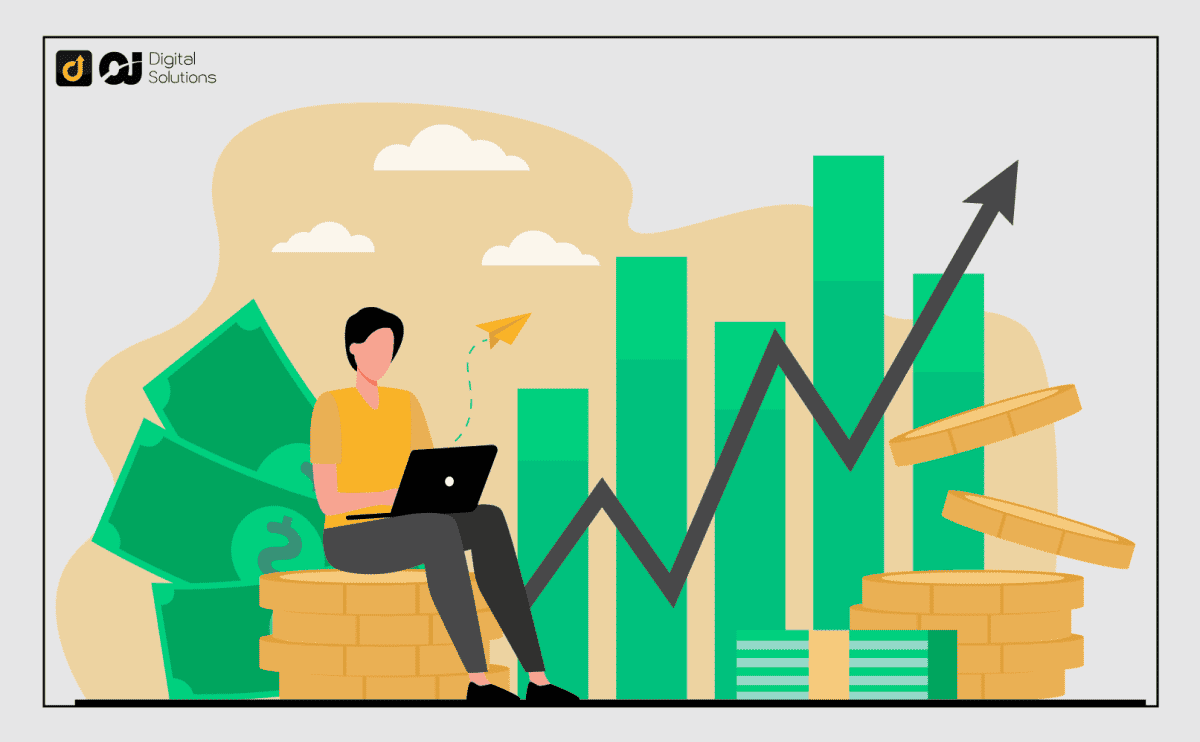
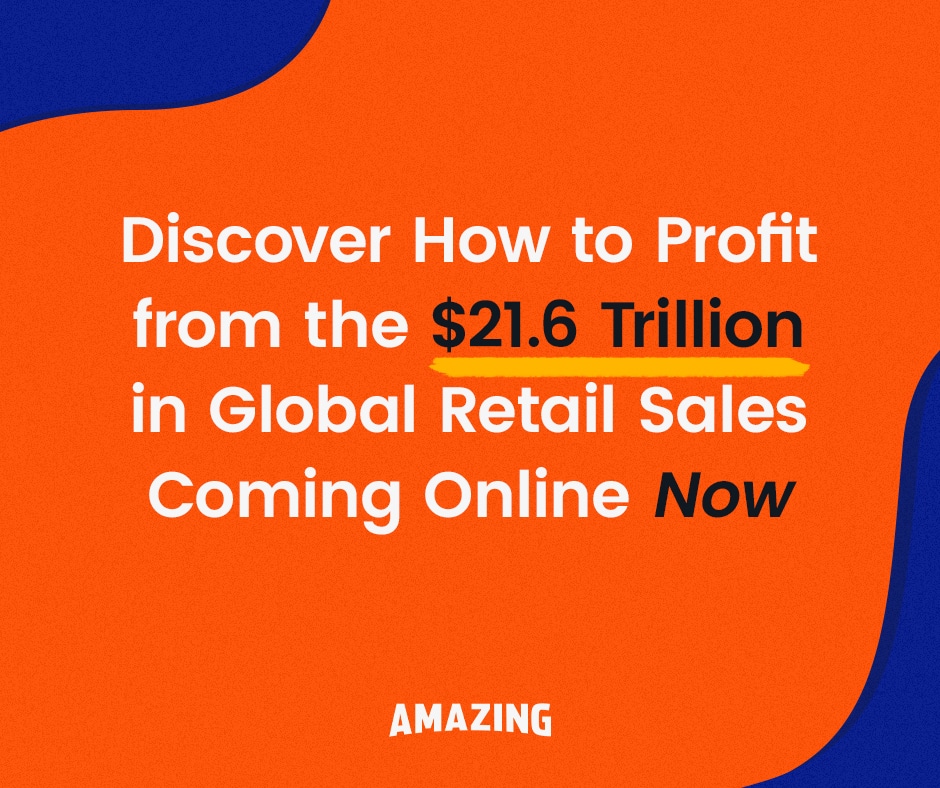



2 Responses
Do you know how we can find experienced overseas people to create the fab store and advertise the products and manage ti?
I found some good people on Upwork and Fiverr, but not to manage everything. It’s better to hire specialists per task you need.
Comments are closed.